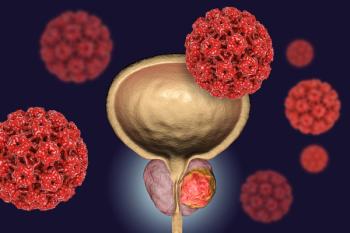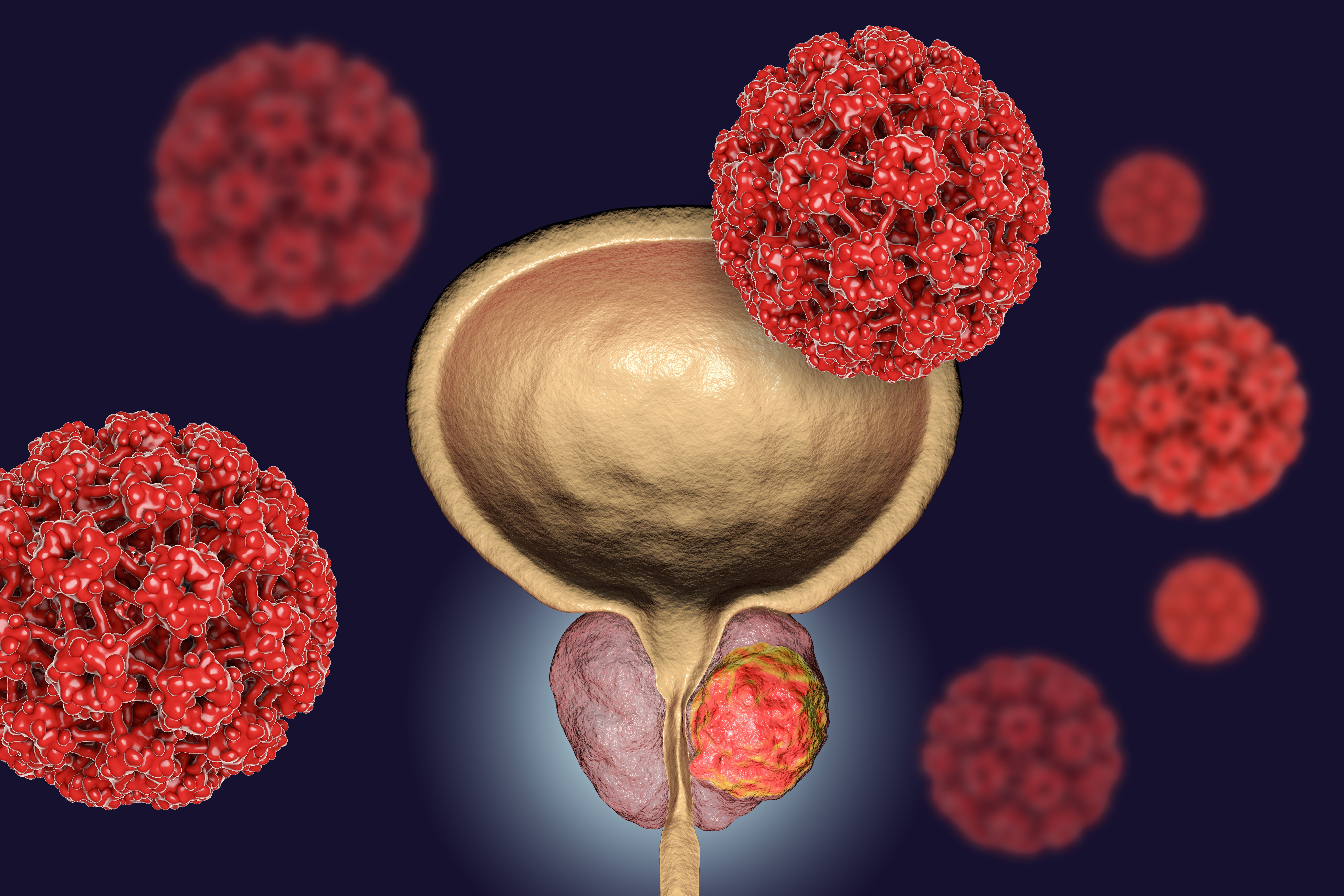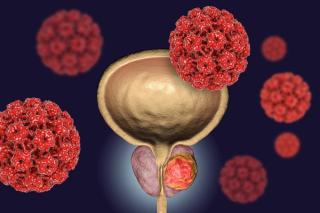
Prostate Cancer
Latest News
Latest Videos

More News

Findings from the phase 3 CONDOR trial support the use of the PSMA PET imaging agent 18F-DCFPyL as the FDA prepares to make a decision on a new drug application regarding its use.

Compared with androgen-deprivation therapy alone, patients with metastatic castration-sensitive prostate cancer had better outcomes when apalutamide was added to systemic therapy.

The potential to identify occult prostate cancer and accurately characterize disease burden was observed with the novel prostate specific membrane antigen (PSMA)–targeted radiopharmaceutical for PET imaging technique.

Darolutamide still has a favorable safety profile with prolonged treatment among patients with nonmetastatic castration-resistant prostate cancer.

For patients with chemotherapy-naïve metastatic castration-resistant prostate cancer receiving androgen deprivation therapy, abiraterone acetate and prednisone plus the addition of apalutamide reduced the risk of radiographic progression or death by 30%.

Antitumor activity and a tolerable safety profile were observed for VERU-111, a novel tubulin inhibitor, to treat patients with metastatic castration-resistant prostate cancer who previously failed an androgen receptor–targeting agent.

ONCOLOGY® sat down with Leonard G. Gomella, MD, professor and chair of Thomas Jefferson University Hospital’s Department of Urology and clinical director of the Sidney Kimmel Cancer Center Network, to discuss 10 years of breakthroughs for patients with prostate cancer and the hope that continued research will fully transform prostate cancer from a deadly disease into a chronic, manageable condition.

A study of capivasertib plus chemotherapy did show a statistically significant extension in overall survival despite not reaching the primary end point of progression-free survival, suggesting a need for prospective validation studies to determine the reasoning behind the observed differences in these results.

CancerNetwork®’s podcast features Justin Gregg, MD, lead author of a study investigating the Mediterranean diet and how it impacts men with localized prostate cancer.

To evaluate the association between radiation facility case volume and OS among men with lymph node–positive prostate cancer who receive external beam radiation therapy, this cohort study assessed men diagnosed with T1N1M0 to T4N1M0 disease treated with curative-intent radiotherapy and androgen deprivation therapy.

The assistant professor of Urology at The University of Texas MD Anderson Cancer Center spoke about the results of a study which evaluated the use of the Mediterranean diet in men with localized prostate cancer on active surveillance.

In response to the drug’s developer, the FDA added overall survival and other end point data to the label of darolutamide for its indication for treating patients with nonmetastatic castration-resistant prostate cancer who are receiving standard androgen-deprivation therapy.

“These findings highlight the dynamic interplay between both providers and their patients as well as between the latter’s [health literacy] and [shared decision making] that should inform the creation and promulgation of [shared decision making] guidelines, specifically when considering patients with low [health literacy],” wrote David-Dan Nguyen, MPH, and colleagues.

Murphy discussed the secondary end point of equivocal findings on PSMA PET/CT from the proPSMA study presented at the SUO 21st Annual Meeting.

Treatment with olaparib versus physician’s choice of standard therapy led to a significantly longer duration of overall survival in patients with metastatic castration-resistant prostate cancer who had tumors with at least 1 alteration in BRCA1/2 or ATM and whose disease had progressed during previous treatment with a next-generation hormonal agent.

Declan Murphy, MB, BCh, shares his thoughts on the potential for prostate-specific membrane antigen PET/CT to impact outcomes for patients with localized and high-risk prostate cancers.

Declan Murphy discusses the accuracy findings from the proPSMA study presented at the 2020 SUO Meeting.

“In the long-term, active surveillance is a safe and viable option for men with low-risk and carefully selected intermediate-risk prostate cancer,” the study authors wrote.

Though these collective findings demonstrate that genetic predisposition to increased weight is protective against breast and prostate cancer, further research is still necessary to work out exactly how this protection is provided, especially in breast cancer.

The expert in urologic oncology spoke about the advancements made in 2020, as well as areas of prostate cancer care which he believes remain to be improved.

Relugolix (Orgovyx) is the first oral drug in its class to receive FDA approval for the treatment of adults with advanced prostate cancer.

Declan Murphy discusses the motivation behind the proPSMA study and the emerging history of PSMA PET/CT to challenge conventional imaging at the 2020 SUO Meeting.

Declan Murphy talked about the future of PSMA theranostics to target metastatic castration-resistant prostate cancer.

Gadzinski spoke about the most exciting aspect of the research coming out of the 21st Annual Meeting of the Society of Urologic Oncology (SUO).

Role of Biomarkers in Selection of Patients with Prostate Cancer for Focal Therapy Currently Unclear
A clear and reliable biomarker to select patients with prostate cancer for active surveillance or focal therapy has not yet been determined but inferring a course of action from existing biomarkers may be possible.





























































































